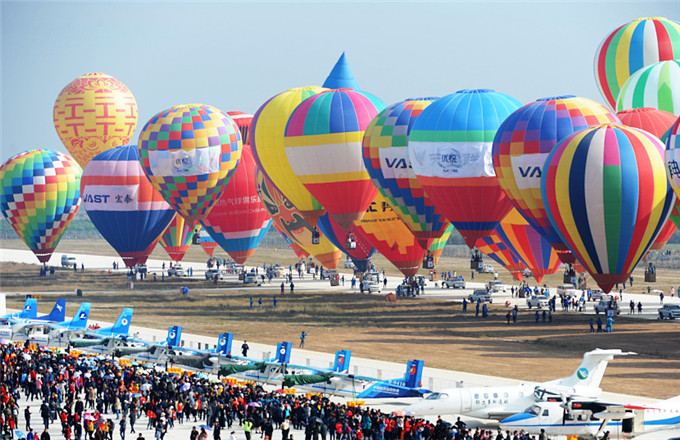Heavy smog blankets Harbin; cities to coordinate efforts
Since coal-burning heating systems were fired up in mid-October, residents in Harbin, Heilongjiang province, are suffering from virtually constant smog, arousing furious queries about what the government is doing about it.
On Tuesday morning, the city's meteorological authorities upgraded the yellow alert for smog to orange, the second-highest level in the nation's four-tier emergency response system.
The air quality index in the city hit 500 from Monday evening to early Tuesday, according to the National Environmental Monitoring Center.
Anything above 300 is considered hazardous. The World Health Organization recommends an index of no more than 20.
"In fact, we have promoted a series of measures to control air pollution this year," Yao Weijing, deputy director of the Harbin municipal environmental protection bureau, said on Tuesday. "For example, we phased out about 2,000 small coal-fired boilers, accounting for about 98 percent of the city, which can help reduce 20,000 tons of dust emissions and 2.4 million tons of coal burned per year."
"However, the recent meteorological conditions don't help dissipate the airborne particles. The burning of crop stalks has become another important factor."
On Saturday, a framework agreement for joint efforts against air pollution was signed by Harbin, Suihua and Daqing.
Under the arrangement, a super lab to monitor haze will be built in Harbin, which will share data with Suihua and Daqing.
Compared with current methods, which can only monitor six indexes, a super lab can monitor more than 100 and conduct in-depth analyses of pollution causes.
The agreement also promotes a goal that air quality in each of the three cities should be much improved by 2018.
The average concentration of PM2.5 — tiny particles that can harm health — in Harbin, for example, should be down to 53 micrograms per cubic meter, a decrease of 25 percent.
"When I got up in the early morning, I noticed the strong smell of smog pervading the air in the room," said Du Shangda, 38, an employee at a State-owned enterprise in Harbin. "Some parents began to discuss whether school classes would be canceled in chat groups, and we all thought the alert should be upgraded to red."
"We didn't receive an announcement from the teacher, so I had to send my daughter to school," said Du, the father of a first-year junior high school student. "I told my daughter not to go outside, and to drink more water."
During the red alert, cars will be allowed on the roads according to license plate number — odd or even to match the date — and enterprises and public institutions will adopt flexible working hours. Major outdoor activities and construction work will be suspended.
Kindergartens, primary schools and middle schools will cancel classes or reduce class time. Key polluting industries will cut production as continuous cleaning operations are conducted in the city's downtown areas.
"In order to avoid traffic jams, we didn't adopt traffic controls. But beyond that we promote all the measures following the red alert," said the environmental protection bureau's Yao. "Kindergartens and schools will cancel outside activities or discharge students early."
"The quantity of pollution has increased rapidly with the development of the city — including automobile exhaust and coal burning," the bureau wrote in an article on its Sina Weibo account. "Furthermore, as a major food producing area, Harbin's output of crop stalks has increased in recent years, along with increasing grain output. The burning of crop stalks contributes to dense air pollution."



























